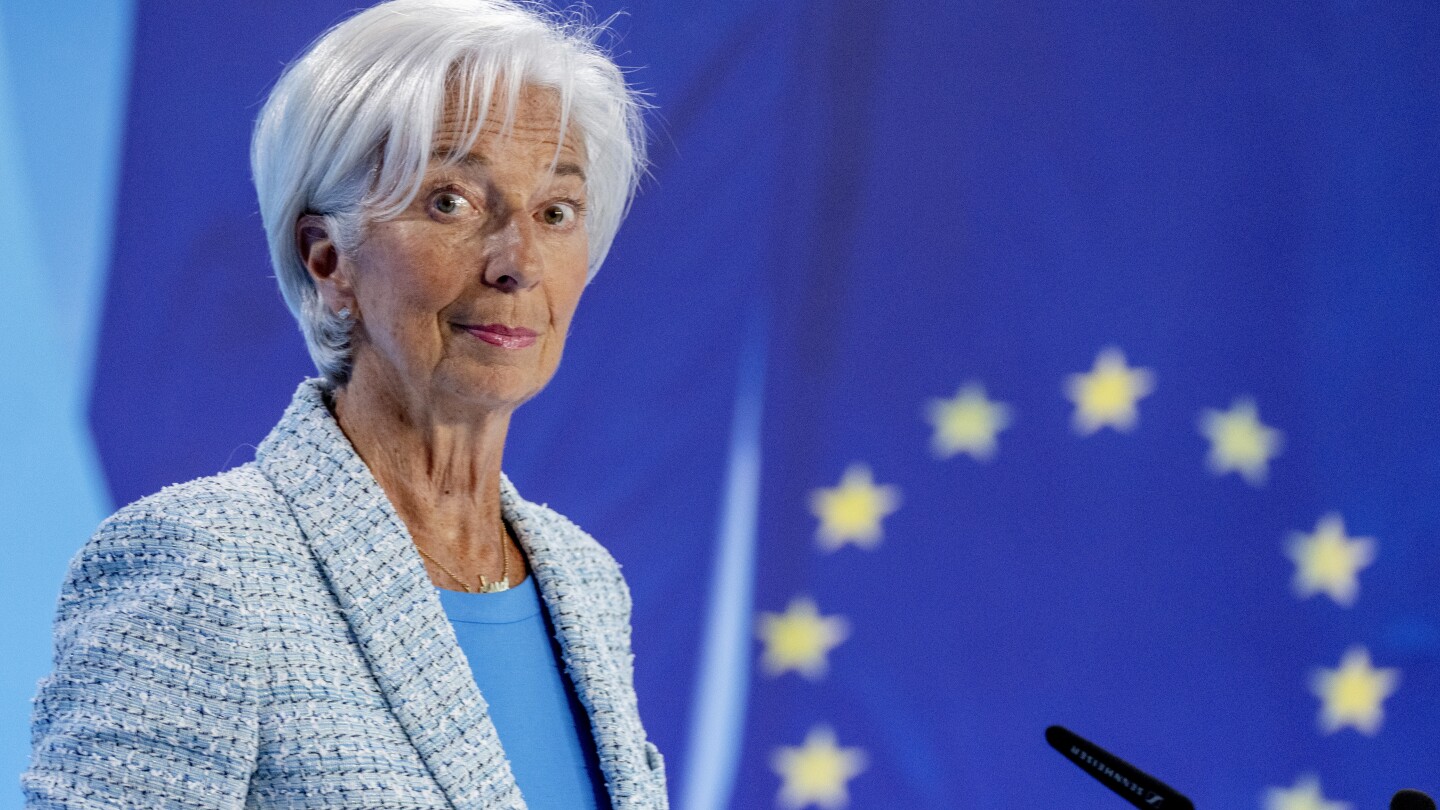Home buyers and businesses waiting for lower interest rates in Europe are going to have to wait a little longer as the European Central Bank takes its time to make sure stubborn inflation is firmly under control before lowering its benchmark rate again.
The ECB’s stance for now resembles that that of the U.S. Federal Reserve, which is expected to hold off lowering rates at its next meeting July 30-31, though the Fed appears closer to cutting rates after that than is the ECB.
Economists say the Frankfurt-based central bank, which decides interest-rate policy and supervises banks in the 20 European Union member countries that use the euro currency, will likely leave its key rate unchanged at 3.75% when its officials meet Thursday in Frankfurt.
Analysts say the rate-setting council will leave a decision on lower rates for the September meeting, after an initial quarter-percentage point cut at the June 6 meeting.
Even the September meeting remains an open question, meaning people with tracker mortgages or wind-park developers trying to finance new turbines might not see any change in their loan costs until after the Oct. 17 meeting.
Analysts say ECB President Christine Lagarde is likely to repeat her message that the bank is sizing up the path of inflation based on the latest data on prices and wages and will decide rates meeting by meeting, rather than sketch out a downward path of regular rate cuts.
The ECB, Fed, Bank of England and other central banks around the developed world sharply raised rates to quell an outburst of inflation that followed Russia’s invasion of Ukraine and the end of the pandemic.
Higher rates make it more expensive to borrow money, spend and invest, cooling off demand for goods and, historically, the upward trend for consumer prices.
Inflation in the eurozone has fallen from a peak of 11.6% in October 2022 to 2.5% in June, slowly approaching the ECB’s goal of 2% considered best for the economy. But the last mile has been tough. Inflation figure has been stuck between 2% and 3% for months.
Workers have been negotiating higher wages to make up for lost purchasing power during the inflation spike and annual prices increases remain too high at 4.1% last month in the crucial services sector – a broad swath of the economy that includes movie tickets, restaurants, medical treatment, and haircuts.
Meanwhile higher rates have slowed growth, which is in short supply in the eurozone. Gross domestic product grew a tepid 0.3 in the first three months of the year after months of stagnation around zero.
The anti-inflation campaign has killed off a years-long rally in eurozone house prices, as mortgage costs weigh on home sales. Several eurozone countries including Spain and Ireland have large numbers of people with adjustable-rate mortgages who have faced sticker shock when looking at their monthly payments. Meanwhile financing costs have risen for renewable energy projects such as wind turbines, a key part of the EU’s effort to reduce greenhouse gas emissions.
The ECB can point however to a strong jobs market with low unemployment as a sign that higher rates are not sending the economy into a recession.
In the U.S., Fed Chair Jerome Powell said Monday that the Federal Reserve is becoming more convinced that inflation is headed back to its 2% target and said the Fed would cut rates before the pace of price increases actually reached that point. Recent figures, he said, “do add somewhat to confidence” that inflation is slowing sustainably. Annual inflation was 3.0% in June, down from 3.3% in May.
Most economists foresee at first cut occurring in September, and after Powell’s remarks Wall Street traders boosted their expectation that the Fed would reduce its key rate then from its 23-year high of 5.25%-5.5%. The futures markets expect additional rate cuts in November and December.

